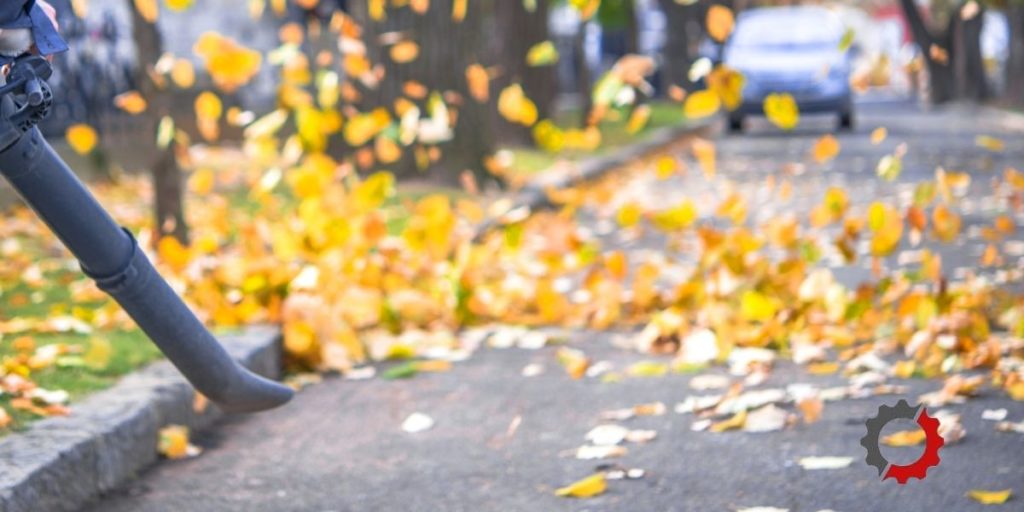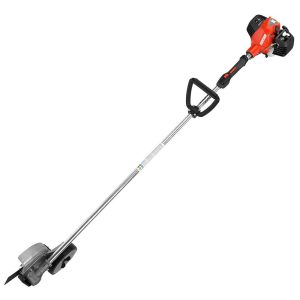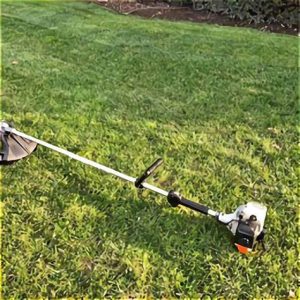How to Service an Echo Leaf Blower: Step-By-Step
An Echo leaf blower can do so much more than just blow leaves. It’s a great tool to use to blow off a patio or deck; remove light snow covering pathways; and dry off a wet lawn mower. To keep your Echo leaf blower working at its best, you should service your Echo leaf blower annually.
An Echo leaf blower service and tune-up includes replacing the air filter, fuel filter, and spark plug along with cleaning the cooling system and exterior of the blower; checking the fuel system; replacing old fuel, and cleaning the spark arrestor.
For specific details and safety instructions for your model Echo leaf blower, refer to your operator’s manual.
Steps to Service and Tune Up a Leaf Blower:
- Gather tools and supplies
- Remove the spark plug & follow safety precautions
- Replace old fuel
- Replace air filter
- Replace fuel filter
- Replace the spark plug
- Check the fuel system
- Clean the cooling system
- Clean the exterior
- Tighten loose hardware & replace broken and missing parts

This post may include affiliate links. Purchases made through these links may provide a commission for us, at no extra cost to you. As an Amazon Associate, we earn from qualifying purchases.
Follow all safety instructions provided in your equipment operator’s manual prior to diagnosing, repairing, or operating.Consult a professional if you don’t have the skills, or knowledge or are not in the condition to perform the repair safely.
Table of Contents
Perform Maintenance on an Echo Leaf Blower in 11 Steps
1. Gather Tools and Supplies to Service an Echo Leaf Blower
- Socket set and screwdrivers
- Fuel filter
- Air filter
- Spark plug
- Clean rags
- Protection gear: gloves and safety glasses
2. Remove the Spark Plug & Follow Safety Precautions Before Servicing an Echo Leaf Blower
Before you start working on your Echo leaf blower, it’s important to take safety precautions which include removing the spark plug and waiting for all parts to stop moving. Be careful if the engine is hot. Use gloves and safety glasses for protection.
You will find a list of all of the safety measures you need to take when servicing and operating your Echo blower in the operator’s manual for your model.
3. Replace Old Fuel in an Echo Leaf Blower
Your leaf blower may not get used regularly and gas can sit in the blower for months. This is not good for the small engine on your Echo blower. Gas begins to go bad as quickly as 30 days after you purchase it.
It can leave behind gummy deposits and build up moisture that causes fuel restrictions and begins to corrode components on your blower.
If you find your fuel is older than this, drain the fuel tank and add fresh fuel. Echo currently offers a full line of leaf blowers with 2-cycle engines. These types of engines require gas and oil to be mixed before placing them in the fuel tank.
Echo leaf blowers use a gas-to-oil mix at a ratio of 50:1. This means 50 parts gasoline to 1 part oil. It requires a 2-cycle premium oil that is ISO-L-EGD and JASO M345 FD certified to be mixed with unleaded gasoline with a minimum octane rating of 89 and a maximum ethanol content of 10%.
Echo offers its own branded oil:
- Echo Power Blend
- Echo Red Armor
| Echo Gas to Oil Ratio | 1 Gallon Gas | 2 Gallon Gas | 2.5 Gallon Gas |
|---|---|---|---|
| 50:1 | 2.6 oz Oil | 5.2 oz Oil | 6.4 oz Oil |
Read more about the type of gas Echo leaf blower to use here. If you are using a different brand string trimmer, make sure you know whether it has a 2-cycle or 4-cycle string trimmer.
Not adding the right fuel to your type of engine can cause engine damage. Read “This is the Type of Gas and Oil Leaf Blowers Use“.
Add a fuel additive like Sea Foam Motor Treatment to stabilize fuel so it lasts longer than 30 days before it breaks down. This additive not only stabilizes gas, but it will also reduces moisture buildup and help keep the fuel system clean.
Echo Red Armor Premixed Fuel is a great alternative to having to mess around with mixing oil and gas. Better yet, this premixed can of fuel is ethanol-free and can be purchased and placed on the shelf so you always have fuel on hand for your leaf blower.
4. Replace the Air Filter in an Echo Leaf Blower
An air filter allows clean air to get to the engine. The filter prevents significant engine damage that can occur when dirt gets into the engine. When the air filter in an Echo leaf blower isn’t regularly cleaned or replaced, it is likely to get plugged.
A plugged filter won’t allow enough air to pass through the filter to allow the engine to start and run. It’s best to install a new Echo air filter annually and then clean it periodically throughout the year. Replace the air filter more often if you are using it in very dusty conditions or if you find it has been damaged.
Replace an Air Filter in Your Echo Leaf Blower
- Close the choke to keep dirt from falling into the air intake.
- Remove the air filter cover held on by clips, knobs, or screws.
- Remove the air filter being careful not to knock any dirt or debris into the air intake.
- Remove any dirt remaining in the air filter housing and the air filter cover.
- Install a new air filter.
- Reattach the air filter cover.
5. Replace the Fuel Filter in an Echo Leaf Blower
The fuel filter strains dirt and other contaminants from the fuel to keep them out of the fuel system. If you can’t find your fuel filter, take a look in the fuel tank. It is attached to the end of the fuel line. First, clean around the fuel cap so dirt doesn’t fall into the tank.
Wipe around the fuel cap to prevent dirt from falling into the tank when the cap is removed. “Fish” the filter out of the fuel tank. A clean piece of bent wire works well.
Get the filter out of the tank. Hold onto the fuel line and ring clip with one hand while pulling the filter out of the line with the other hand. Be careful to keep the ring clip on the fuel line and not lose it.
Install the new fuel filter by inserting the male end into the fuel line and sliding the ring clip over the fuel line and male end to secure the filter. Place the filter back in the fuel tank and securely attach the fuel cap.
6. Replace the Spark Plug in an Echo Leaf Blower
It’s good practice to install a new spark plug annually. A fouled spark plug covered in dirt, carbon, and oil; or a plug that has a burnt electrode or broken porcelain can cause an Echo blower not to start.
You must also check the spark plug gap and the spark plug wire connection. If the gap isn’t correct and the wire isn’t making good contact, your blower may not start.
Once you remove the old plug and install a new plug that is gapped to manufacturer specifications, don’t attach the spark plug wire until you have completed all steps of this service.
7. Check the Fuel System in an Echo Leaf Blower
Check the condition of the fuel system components including the fuel tank, fuel lines, and fuel cap. If you find any leaks or cracks, replace the items.
Check the fuel cap seal to make sure it is sealing and the fuel is not leaking out of the cap area. Do not operate a leaf blower that has a fuel leak without repairing it.
8. Clean the Cooling System in an Echo Leaf Blower
The engine can overheat and shut down when it gets hot due to debris and dirt clogging the air passageways. When air can’t circulate around the engine to keep it cool, your Echo blower will overheat and cause engine damage.
Before working around the engine, make sure the spark plug wire is still removed. Remove the engine cover. Clean all debris from the engine cover and around the engine.
Remove debris buildup on the cooling fins. You can use a bristle brush to remove dirt. Don’t use any metal tool to remove the debris as this can damage the blower.
9. Clean the Spark Arrestor of an Echo Leaf Blower
You will find a spark arrestor on your Echo leaf blower that can become plugged with soot and prevent it from starting. With the spark plug wire disconnected, remove the engine cover and engine exhaust cover.
Remove the spark arrestor and clean it with a wire brush to remove the soot. If you are unable to clean it sufficiently or it is broken or has a hole in it, replace it with a new spark arrestor.
Reinstall the screen and reattach the exhaust and engine covers. Reconnect the spark plug boot once you are done with repairs.
10. Clean the Exterior of an Echo Leaf Blower
Add a mild dish detergent to the water. Dampen a clean cloth and clean the exterior of the leaf blower. If you are servicing an Echo backpack leaf blower, make sure you get the debris that gets stuck between the backpack frame and the blower housing.
11. Tighten Loose Hardware & Replace Broken & Missing Parts on an Echo
Inspect your blower for loose or missing parts. Replace any items that are missing or damaged. Tighten any loose parts. Don’t operate your Echo blower until all parts are installed and in good working order.
12. Reattach the Spark Plug Wire
Now that all of the work is complete on your Echo leaf blower, you can reattach the spark plug wire.
Tuning Up Your Echo Leaf Blower Will Help Keep It Running
While it’s common to run into a problem with your Echo leaf blower over time, you can extend the life of your leaf blower by running fresh quality fuel and tuning up your leaf blower every year by performing a full service using the step above.
This includes changing the items you can find in an Echo tune-up kit which includes an air filter, fuel filter, and spark plug.
You can purchase these tune-up kits on Amazon or your local Echo dealership. Replacing these items, cleaning your blower, and taking good care of it can reduce problems with your Echo leaf blower not starting or running rough.







